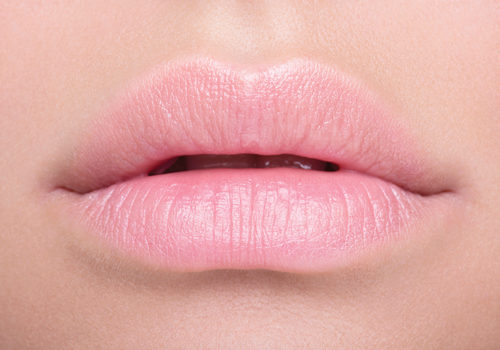Blistering winds and freezing temperatures do more than throw nature off its balance—they also dry out lips. Luckily, there are many natural products that promise to restore your shoppers’ pouts into prime, kissable condition.
Natural Products vs. Drug Store Variety
When it comes to lip products, some shoppers favor the dollar store variety. They feature colorful packaging and bold flavors like Tequila and Upside Down Pineapple Cake (1). However, these balms contain harmful chemicals that could have negative effects on the body.
Petroleum is the most common of these chemicals. It suffocates the skin and some researchers believe it may contribute to breast cancer (2). Other chemicals like menthol and salicylic acid strip off the protective layer of dead skin on the lips, thus making them more prone to chapping. This increases the use of the balm and the ingestion of harmful chemicals (3). Many products also contain silicone oil because it makes the balm last longer, but it locks out moisture, giving the wearer dry lips (4).
Meanwhile, natural products present shoppers with healthy alternatives that moisturize and protect lips instead of promoting chapped, dry skin. Just like their drug store counterparts, they come in a variety of flavors like Pink Grapefruit and Highland Mint (5). Vegan lip balms also fall into this category, which replace animal products with plant-based ingredients like hemp.
Ingredients in Natural Products
Though every natural lip balm brand is unique, here are some common ingredients that give consumers a luscious shine without the chemicals.
• Aloe: Stimulates cell rejuvenation and contains 12 vitamins, 18 amino acids, 20 minerals, 75 nutrients and 200 active enzymes (9).
• Beeswax: Moisturizes lips and provides immediate relief for cracks and fissures (6). Not suitable for vegan shoppers.
• Camphor: Has many anesthetic and antimicrobial properties (6), but can evaporate quickly (4).
• Cocoa butter: Supplies moisture (7). Recommended by the American Cancer Society for chemotherapy-related mouth sores (8).
• Extra-virgin olive oil: Moisturizes and protects lips (6), while shielding them from harmful UV rays (10).
• Rosemary: Contains antibacterial properties to cleanse lips. Also used as a natural preservative to keep balm fresh (6).
• Sea buckthorn: Restores cells in lips and prevents sunburn (6).
Cold Sores
Many people develop painful red cold sores that can take anywhere from a few days to two weeks to heal (11). Natural products may help. Many leading brands use tea tree oil, which has a myriad of properties (anti-bacterial, anti-microbial, anti-septic and more) that make it ideal for cold sore treatments (12). Peppermint oil is another ingredient found in many natural cold sore products (13). Other brands use the amino acid L-lysine in their products. L-lysine is an essential amino acid that our bodies cannot synthesize. It contributes to fewer cold sore outbreaks, and a reduction in symptoms (14).
Lipsticks and Lip Tints
Balms aren’t the only lip products to contain harmful chemicals. Many lipsticks and lip tints are filled with additives that are considered carcinogenic. Last year, the U.S Food and Drug Administration (FDA) conducted a study that uncovered small amounts of lead in approximately 400 lipsticks (15). Although FDA insisted these miniscule numbers posed no serious threat to consumers’ health, some experts disagree. In the past, lead has been linked to memory loss, mood disorders and miscarriages (16).
Thankfully, there are healthy alternatives for consumers. Some companies use organic and fairly traded materials, like cocoa butter, to naturally tint their balms (17). Vitamin E is another popular ingredient in lipsticks. Acting as an antioxidant, vitamin E attacks molecules in the body that damage skin cells, which is believed to offer anti-aging benefits (18). Hemp is another ingredient used in many natural and vegan lip tints. Hemp contains essential fatty acids that are needed for heart, brain and skin health (19).
The skin on the lips is extremely thin and lacks the protection that the rest of the body has. So, make sure your shoppers cover their kissers with the very best ingredients the industry has to offer. WF
|
Lip Rehab Winter wreaking havoc on your lips? Mayo Clinic dermatologist Lawrence E. Gibson, M.D., has five tips for rehabilitating your lips (20). |
References
1. "My Lip Stuff: Flavor Breakdown," http://www.mylipstuff.com/flavordescriptions.html, accessed Feb. 25, 2013.
2. "Petroleum and Cosmetics: What are the potential health risks?"
http://www.organicmakeup.ca/CA/PetroleumCosmetics.asp, The Organic Makeup Company, accessed Feb. 25, 2013.
3. "Bingeing on Balm, or hip lip service?" http://www.sptimes.com/2006/01/22/Floridian/Bingeing_on_balm__or_.shtml, accessed Feb. 25, 2013.
4. J. Richards, "4 Lip Balm Ingredients to Avoid," http://www.bellasugar.com/Bad-Lip-Balm-Ingredients-6216447, accessed Feb. 25, 2013.
5. "Classic Lip Balm," http://www.badgerbalm.com/p-414-classic-lip-balm.aspx, accessed Feb. 25, 2013.
6. "Ingredient Glossary," http://www.badgerbalm.com/s-79-ingredient-glossary.aspx, accessed Feb. 25, 2013.
7. "Moisturizers: Do They Work," http://www.health.harvard.edu/fhg/updates/Moisturizers-Do-they-work.shtml, accessed Feb. 25, 2013.
8. "Caring for the Patient With Cancer at Home," http://www.cancer.org/treatment/treatmentsandsideeffects/physicalsideeffects/dealingwithsymptomsathome/caring-for-the-patient-with-cancer-at-home-mouth-sores, accessed Feb. 25, 2013.
9. "Benefits of Aloe Vera," http://www.globalhealingcenter.com/natural-health/benefits-of-aloe-vera/#2, accessed Feb. 25, 2013.
10. A. Budiyanto, et al., "Protective effect of topically applied olive oil against photocarcinogenesis following UVB exposure of mice," http://www.ncbi.nlm.nih.gov/pubmed/11062172, accessed Feb. 25, 2013.
11. "Cold Sories - Topic Overview," http://www.webmd.com/skin-problems-and-treatments/tc/cold-sores-topic-overview, WebMD, accessed Feb. 25, 2013.
12. "Health Benefits of Tea Tree Essential Oil," http://www.organicfacts.net/health-benefits/essential-oils/health-benefits-of-tea-tree-essential-oil.html, accessed Feb. 25, 2013.
13. A. Schuhmacher, et al., "Virucidal effect of peppermint oil on the enveloped viruses herpes simplex virus type 1 and type 2 in vitro," http://www.ncbi.nlm.nih.gov/pubmed/13678235?ordinalpos=1&itool=EntrezSystem2.PEntrez.Pubmed.Pubmed_ResultsPanel.Pubmed_SingleItemSupl.Pubmed_Discovery_RA&linkpos=1&log$=relatedarticles&logdbfrom=pubmed, accessed Feb. 25, 2013.
14. "L-Lysine," http://www.altmedrev.com/publications/12/2/169.pdf, Alternative Medicine Review, accessed Feb. 25, 2013.
15. "FDA Analyses of Lead in Lipsticks – Expanded Survey," http://www.fda.gov/Cosmetics/ProductandIngredientSafety/ProductInformation/ucm137224.htm#expanalyses, accessed Feb. 25, 2013.
16. "Lipstick, other makeup may contain hidden harmful ingredients," http://abclocal.go.com/kabc/story?section=news/health/your_health&id=8714883, accessed Feb. 25, 2013.
17. "Lip tints and shimmers," http://www.badgerbalm.com/p-463-lip-tint-shimmer.aspx, accessed Feb. 25, 2013.
18. "Protection Against Photoaging," http://www.skincarephysicians.com/agingskinnet/photoaging.html, accessed Feb. 25, 2013.
19. "Hemp Health Benefits," http://www.naturallysplendid.com/hemp-health, accessed Feb. 25, 2013.
20. L.E. Gibson, "I seem to have chapped lips all winter. Is there anything I can do to prevent or treat chapped lips?" http://www.mayoclinic.com/health/chapped-lips/AN01440, accessed Feb. 25, 2013.
Published in WholeFoods Magazine, April 2013









